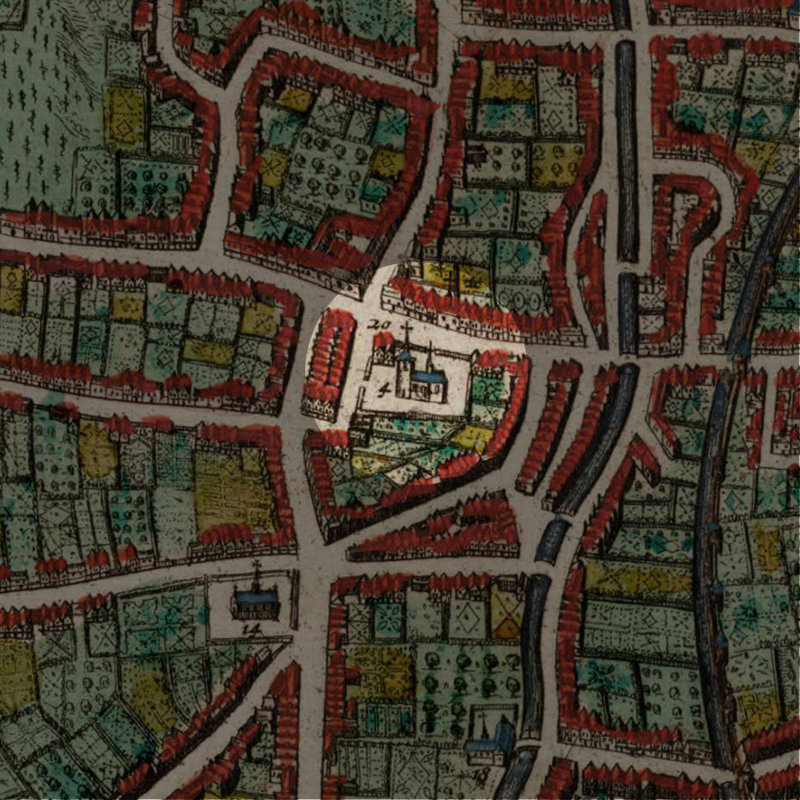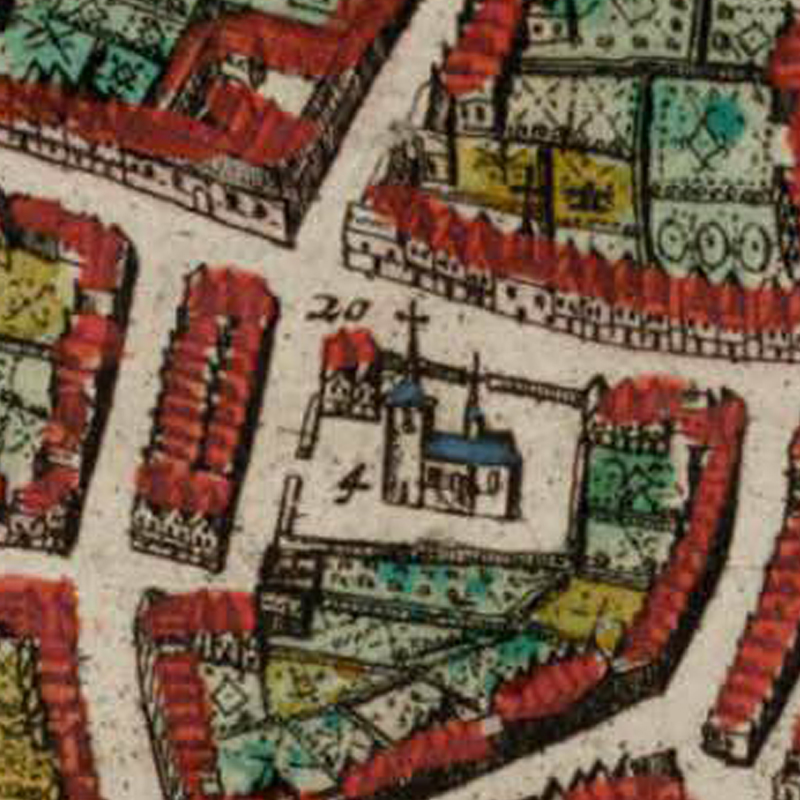ABOUT
The cartographer made two mistakes on this location: one, the guesthouse was called “Sint-Laurentiusgasthuis”, not “Sint-Corneliusgasthuis”. Secondly, the location was not directly in the compounds of the Sint-Jacobskerk but one block down the Brusselsestraat where the roundabout is nowadays.
Origin
On the spot where the Brusselsestraat meets the Goudsbloemstraat, was the St-Lawrence Guesthouse (Sint-Laurentiusgasthuis) that existed from 1290 to 1800.
It was originally set up for the pilgrims on their way to Santiago de Compostela in Spain.
Property of the Church, the centuries-old Sint-Laurentiusgasthuis had 10 beds for the sick and weary, as well as a small chapel.
In 1545, the Church closed down the Sint-Genovevagasthuis on Diestsestraat, by fusing it with the Sint-Laurentiusgasthuis.
In the year 1700, the Archbishop of Mechelen, Humbertus Guilielmus de Precipiano, gave it to the nearby Sint-Jacobskerk to run, as it had turned into a nocturnal refuge filled with “drunkards, beggars, and persons with bad intentions“.
But in 1800 right after the French Revolution, the guesthouse stopped functioning and in 1806, the ancient chapel collapsed and taking with it parts of the guesthouse.
Traces of the guesthouse could still be seen on the spot by the end of the 19th century, all of which have since disappeared.
What's so special about this place?
The spot of Sint-Laurentiusgasthuis and the tiny square itself was called the Blue Corner – Blauwe(n) Hoek – in the Middle Ages.
It was in fact a corruption of the name “Blijde Hoek”, which means “the happy corner”. This is because the square used to host a number of breweries along the Brusselsestraat.
Incidentally, in front of the Sint-Laurentiusgasthuis, the square was occupied by the wool market in medieval times.
Back then, the Blauwe Hoek cut the modern-day Brusselsestraat into two:
- Bieststraat, east towards to the early city gate of Biestpoort (nowadays the Spar supermarket)
- Wijngaardstraat, west towards the later city gate of Wijngaardpoort (nowadays the Brusselsepoort)
The 100 year-old cooking utensils shop Mafrans located on the Diestsestraat closed recently in 2019. Its founder Philippe Mafrans started out selling agricultural tools on the Blauwe Hoek.
Current situation
The Sint-Laurentiusgasthuis is long gone, but the name of Blauwe Hoek is still used among the Leuven inhabitants. Today, the spot where the Sint-Laurentiusgasthuis used to stand is occupied by one of my favourite supermarkets called “Exotic World“, with a huge selection of foreign produce from all over the world.
Sources:
https://nl.wikipedia.org/wiki/Blauwe_Hoek
https://inventaris.onroerenderfgoed.be/themas/1035
HOW IT LOOKS LIKE TODAY
Click on the zoom icon to view the full size.





